
- Shandong Loyal Industrial Co.,Ltd.
- Macaroni Production Machine Instant Noodle Machine Biscuit Making Machine
Home> Processing> Revealing the secret of small-capacity instant noodle production line

Revealing the secret of small-capacity instant noodle production line
2025-04-25 16:38:13Instant noodles: a delicious choice in a fast-paced life
In the fast-paced lifestyle of modern society, instant noodles have long become an important part of the daily diet of consumers around the world. Whether it is students, office workers, or travel enthusiasts, instant noodles are deeply loved by users of all ages for their "convenient, fast, delicious, and affordable" characteristics.
1. The origin and development of instant noodles
Instant noodles were born in 1958 and were invented by Japanese Momofuku Ando. The original instant noodles were made by frying and drying, which can be stored for a long time and can be eaten after boiling in water for 3 minutes. With the advancement of technology, a variety of product forms such as non-fried noodles, microwave heating, and cup noodles have been continuously launched to meet the diverse needs of consumers.

2. What are instant noodles?
Instant noodles are noodles that are pre-cooked, dried or fried, and can be eaten by just brewing with hot water or boiling for a short time. Usually equipped with seasoning packets (such as powder packets, sauce packets, vegetable packets, etc.), they are fast, convenient, and durable to store.
Main categories:
(1) Fried instant noodles: The noodles are steamed and then fried to dehydrate, with a crispy texture and quick rehydration (such as mainstream products such as Master Kong and Uni-President).
(2) Non-fried instant noodles: Made by hot air drying or freeze drying, they are healthier but take a longer time to rehydrate.
(3) Wet noodles: Not completely dehydrated, with a shorter shelf life (such as some udon noodles and ramen noodles).
3. What are fried instant noodles?
Fried instant noodles are the mainstream type of instant noodles. The production process includes:
Dough mixing → Rolling and cutting → Steaming → Fried dehydration → Cooling and packaging.
During the frying process, the water in the noodles evaporates quickly, forming a porous structure, which allows the noodles to rehydrate quickly. At the same time, the oil penetration gives the noodles a unique aroma and crispy taste.
4. Advantages of fried instant noodles
|
High production efficiency and low cost |
Frying and dehydration are fast, suitable for large-scale industrial production, and the unit cost is lower than that of non-fried processes.
|
|
Better taste and flavor |
(2) Crispy and fragrant: During the frying process, oil (such as palm oil) penetrates the noodles, bringing a unique burnt aroma and smooth feeling.
|
|
Long shelf life |
It can be stored for 6-12 months at room temperature, which is convenient for storage and transportation.
|
|
Mature technology and high market acceptance |
Since Ando Momofuku invented fried instant noodles in 1958, the process has been stable and it is the most familiar type of instant noodles to consumers around the world.
|
|
Adapt to diversified products |
The hardness of the noodles can be controlled by adjusting the frying temperature and time to adapt to different flavors (such as crisp noodles, instant noodles, fried noodles, etc.).
|

5. Instant noodles production process
The production process of modern instant noodles mainly includes:
Dough mixing and maturation: Mix wheat flour with water, add salt and alkaline ingredients to enhance the elasticity and taste of the noodles.
Rolling and cutting: Press into thin sheets through a noodle press, and then cut into long and thin noodles.
Steaming and drying: After high-temperature steaming and maturation, use frying or hot air drying to dehydrate.
Adding seasoning packets: Pair with rich ingredients such as powder packets, oil packets, and vegetable packets to enhance the flavor.
Packaging and sealing: Sealed by an automated packaging machine to ensure product hygiene and safety.
6. Diversification and innovation of instant noodles
Today's instant noodles are not only fast food, but also a kind of "innovative cuisine". Hot pot noodles, self-heating noodles, Internet celebrity ramen, low-fat and low-sugar healthy noodles and other categories have appeared on the market, catering to the consumer psychology of young people who want "both convenience and nutrition". At the same time, many companies are also developing high-protein, high-dietary fiber instant noodles to improve nutritional value.
After introducing so many aspects, are you interested in instant noodle manufacturing? If so, please continue reading and I will introduce the instant noodle production line.

Instant noodle production line flow chart
FLOUR-MIXING MACHINE---ROLLING AND PRESSING MACHINE --- CONVEYOR---BOILING MACHINE---CUTTING MACHINE---SORTING MACHINE---AUTOMATIC ELECTRIC FRYER---OIL TANK(optional)---OIL FILTER(optional)---COOLING MACHINE
The function of instant noodle production line
1.FLOUR MIXER: Mixing the raw material uniform.
2.ROLLING AND PRESSING MACHINE: After heat treatment, increases the hardness of the roll, the noodles that are pressed out are lighter and stronger.
3.CONVEYOR: To Deliver the Shaped Noodles to Next Device-Boiling machine.
4.STEAM BOILING MACHINE: Using the electrical to heating the water to have steam, then Boiling the noodles by steam.
5.CUTTING MACHINE: It is used to cut noodles and adjust the frequency by controlling the size of noodles.
6.SORTING MACHINE: Put the cutter noodles here. The workers need put the noodles from this plate to the noodles box of next device-Drying machine.
7.ELECTRIC FRYER: Fried instant noodles.
8.OIL TANK: To storage the oil.
9.OIL FILTER: To filting the oil with longer the life of the oil.
10.COOLING MACHINE: Cool to room temperature.
Layout of the instant noodle production line
We are introducing a small-volume instant noodle production line, so the noodle mixer can be placed anywhere. A sorting table can be added after the cutter, and the noodles can be manually placed in the noodle box of the fryer.

Sample of instant noodles production line
The instant noodle samples mainly differ in weight and shape (round, square).
After introducing the small production instant noodle equipment(11000 pieces/8h) , what kind of people are suitable to buy it?
Small-volume instant noodle production lines are usually suitable for small and medium-sized enterprises, specialty product production or market testing, and have the following advantages:
1. Low investment cost
Low equipment investment: The production line is small in scale, and the required equipment (such as dough mixers, calenders, steamers, cutting and sorting machines, etc.) has lower purchase costs and floor space, which is suitable for enterprises with limited funds.
Reduce risk: Reduce initial capital pressure, especially suitable for start-up brands or niche markets.
2. Strong flexibility
Quickly adjust products: Flexible changes in formulas (such as multi-grain noodles, low-fat noodles), shapes (such as wide noodles, thin noodles) or seasoning packets can be made to meet niche needs or seasonal products.
Small batch trial production: Convenient for testing new flavors or packaging market reactions, avoiding large inventory backlogs.
3. Suitable for specialization and customization
Differentiated competition: Produce high-end, healthy (such as non-fried, low-salt), regional flavors (such as spicy, sour soup) and other specialty products to avoid homogeneous competition with big brands.
Customized orders: accept small-volume orders such as corporate gifts and event customization to increase added value.
4. Controllable operating costs
Low energy consumption: Compared with large production lines, it consumes less water, electricity and labor, and is suitable for low-capacity needs.
Reduce waste: produce on demand to reduce the loss of raw materials and finished product inventory.
5. Adapt to niche markets
Localized sales: supply community supermarkets, restaurants or online niche channels (such as e-commerce platforms, vertical communities) to reduce logistics costs.
Quick response to trends: such as catering to the trend of healthy diet and launching fresh noodles with short shelf life and no additives.
6. Low technical threshold
Easy to operate: relatively low technical requirements for workers and short training cycle.
Easy maintenance: simple equipment structure and low repair and maintenance costs.
7. Environmental protection and sustainability
Low emissions: small-scale production is easier to control wastewater and exhaust emissions and comply with environmental regulations.
Experiment with green processes: such as trying innovative technologies such as solar drying and degradable packaging.
Examples of applicable scenarios:
Startups: test market acceptance and gradually expand.
Local specialty foods: regional products such as handmade hot and sour noodles and Japanese ramen.
Healthy food workshops: produce organic, low-calorie instant noodles, targeting fitness or mother-and-child groups.
Notes:
Higher unit costs: small batches may result in higher unit costs than large-scale production, which needs to be compensated by pricing or added value.
Production efficiency limitations: daily output is usually low (such as hundreds of packs per hour), and demand and production capacity need to be balanced.
In short, the core advantages of small-volume production lines are low-cost trial and error and flexible innovation, which are suitable for companies that pursue differentiation or have limited resources.
About packaging and after-sales service
Packing: Plastic Film Suitable For Ocean Carriage
Technical Support: The customer can inform machine related problems to us via telephone, email or fax. All information will be recorded and will be reported to the After-sale Service team. Meanwhile, the sales person will be tracking the case until problem solved.
Service Team:We have a professional After-sale Service team including10 professional engineers with at least 6 years working experience. They can handle technical consultation about manufacturing process, maintenance, fault diagnosis and troubleshooting, etc.
After-sale Service available :1.Check & test before delivery 2.Instruction for installation 3.On site commissioning 4.Repair & maintenance
After the receipt the advanced payment, we will provide allocation chart at the buyer’s request. When effect the shipment, we’ll provide operation manual, etc. in English.
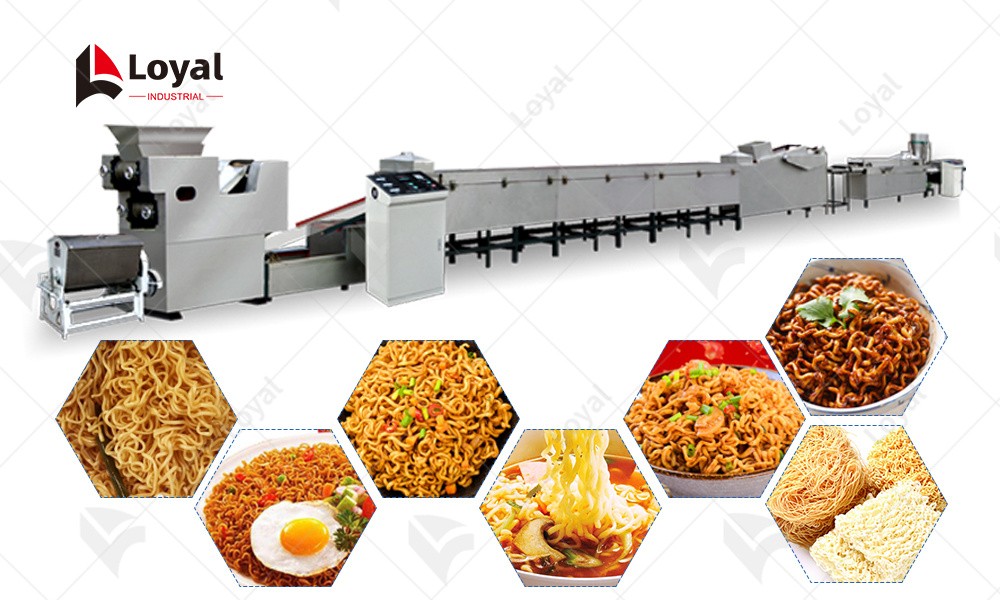
Recommended Company
Shandong Loyal Industrial Co.,Ltd. Is a Manufacturer Of Snacks Extruder Machine , Industrial Microwave Oven , Corn Flakes Production Line , And a Standing Director Of China Food And Drying Equipment Industry Association.
The Self-developed Twin-screw Extruder And Single-screw Equipment of Shandong Loyal Machinery Have Been Used In Production: Puffed Snack Food, Breakfast Cereal Corn Flakes, Fried Pasta, Bread Crumbs, Fruit Chips, Baby Food, Textured Soy Protein (tsp) Food, Fish Feed And Pet Food. a Variety of Snack Production Line Supporting Products.at The Same Time, The Batching, Drying, Flaking, Baking, Frying And Spraying Equipment Matching The Twin-screw Extrusion System Have All Achieved Independent Design And Production.
Our Extrusion System Is Widely Used In: Puffed Snack Foods, Breakfast Cereals, Vegetable Protein Meat Products, Soy Based Nutrition Bars, Reconstituted Rice, Grain Nutrition Powder, Modified Starch, Starch-based Sticky Music Children's Educational Toys, Degradable Starch-based Packaging Filling Materials, Bread Crumbs And Other Food Additives, Pet Food, Aquatic Feed, Biology And Chemical Industries.
Customer-specific Food Processing Plant Project Solutions
As one of the leading manufacturers of food processing equipment, we are always searching for new solutions that benefit our snack food customers. Our experienced frying engineers always find the optimal solution for your industrial batch and continuous frying system line application. That's why we also develop, design and produce custom fried snack production line.
Fried instant noodles have long dominated the global convenience food market with their unique production advantages, excellent eating experience and mature process technology. Since its invention in 1958, this food form has developed into an indispensable part of modern fast-paced life. The key to its success lies in the perfect balance of production efficiency, product quality and consumer experience, forming a market position that is difficult to be completely replaced.
Fried instant noodles have long occupied the mainstream market with their advantages such as efficient production, fast rehydration and crispy taste, but their high oil characteristics have also promoted the innovation of non-fried products. Consumers can choose the right type based on health needs (such as low fat) or taste preferences (such as crispy feeling).
Looking ahead, the instant noodle industry will continue to find a balance between tradition and innovation. In this era of pursuing both efficiency and health, the diversified development of instant noodle products will provide global consumers with more choices.So if you are interested, you might as well give it a try. Just do it.
For more information, please visit the Facebook page:
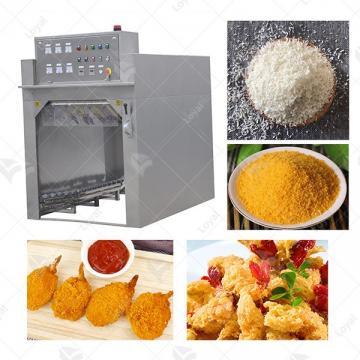 Commercial Japanese Panko Bread Crumb Grinder Machine
Commercial Japanese Panko Bread Crumb Grinder Machine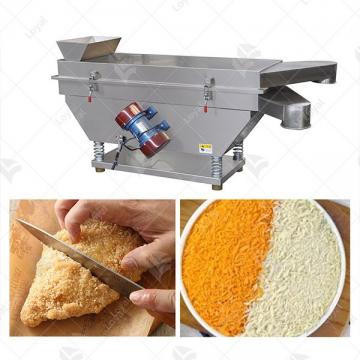 Japanese Bread Crumbs Processing Line
Japanese Bread Crumbs Processing Line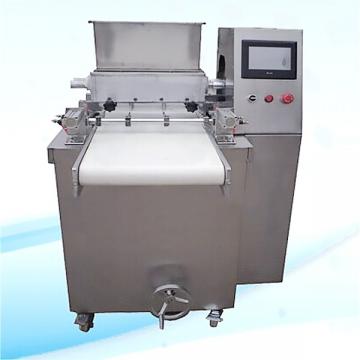 Automatic Cookies Making Machines
Automatic Cookies Making Machines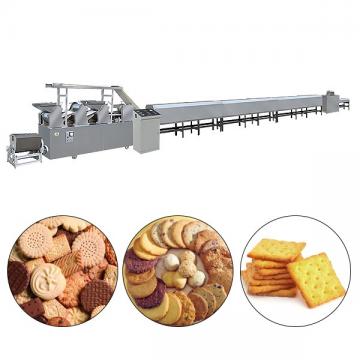 Fully Automatic Biscuit Making Machines
Fully Automatic Biscuit Making Machines